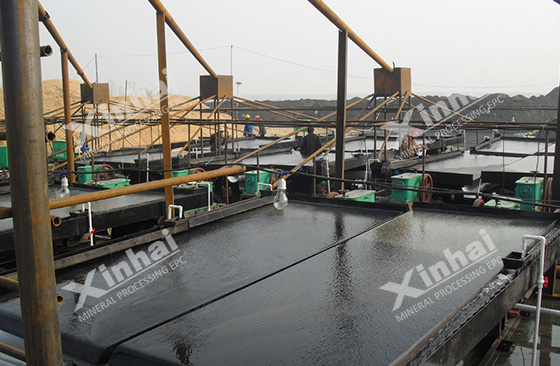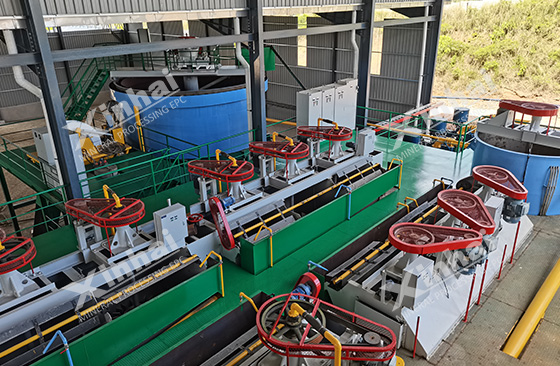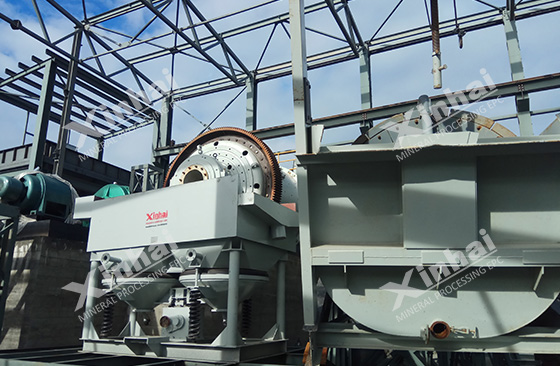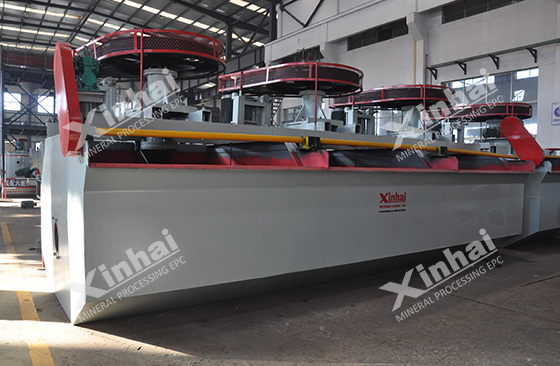Spodumene, as an important lithium ore resource, has various methods adopted by the concentrator in actual separation. Depending on the type of ore, the concentrator will choose different beneficiation methods. This article will introduce you to the gravity separation and flotation separation methods of lithium ore spodumene and the equipment used in these two beneficiation methods.
Use the table of contents below to navigate through the guide:
01Lithium ore podumene Gravity vs Flotation
The difference between the gravity separation method and the flotation separation method of spodumene ore lies in its separation principle and application process.

1. Gravity separation method
Gravity separation uses the difference in density between ore and gangue minerals to achieve separation. It separates spodumene from gangue minerals through the action of heavy medium (such as water, heavy medium suspension, etc.) based on the specific gravity difference between different minerals. Gravity separation methods include dense medium separation and gravity separation. In dense medium separation, by adjusting the density in the suspension, the denser spodumene sinks, while the less dense surrounding rock minerals float to achieve separation. In gravity separation, through the action of vibration or water flow, the heavier spodumene will settle, and the lighter surrounding rock minerals will flow away, thereby separating the spodumene.

2. Flotation separation method
The flotation method is to achieve separation by adjusting the surface properties of ore and gangue minerals in water so that they are selectively adsorbed or inhibited. The flotation method grinds the ore into fine particles and mixes it with water and flotation reagents to form a flotation suspension. The function of the flotation reagent is to change the properties of the surface of the mineral particles, so that the hydrophobic spodumene particles are adsorbed on the bubbles and rise to the liquid surface, forming spodumene flotation foam, while the gangue minerals sink to the bottom. Separation of spodumene from gangue minerals is achieved by collecting spodumene particles on the foam.
Therefore, the gravity separation method achieves separation through density differences, while the flotation separation method achieves separation through surface property modulation. Gravity separation is more suitable for coarse separation based on the density difference of minerals, while flotation separation is suitable for selective separation of minerals at the fine particle level. Which method to choose depends on the characteristics of the ore, particle size, impurities in the ore and other factors. Sometimes multiple separation methods are used in combination to improve the separation effect and extraction rate.
The equipment used in gravity and flotation separations of lithium ore spodumene differs depending on the specific method and process requirements.

02Lithium ore spodumene gravity separation equipment
1. Dense medium hydrocyclone: heavy medium separation cyclone is used for heavy medium separation. Separation of materials based on density differences by creating swirling motion in a density suspension.
2. Mineral dressing shaker: mineral dressing shaker is used to separate materials according to density and particle size. They utilize pulsed water flow and a bed of particles to stratify and separate heavier and lighter materials.
3. Spiral chute: The spiral chute utilizes the spiral flow of water to separate materials according to density and particle size. They are suitable for gravity separation of fine particles.

03Lithium ore spodumene flotation equipment
1. Flotation machine: Flotation machine is the main equipment used in flotation separation. They are equipped with an agitator that generates air bubbles and facilitates the attachment of hydrophobic particles such as spodumene to the air bubbles. Depending on the specific flotation process, various types of flotation cells can be used, such as mechanical cells, column cells and pneumatic cells.
2. Foam scraper and scraper: Foam scraper and scraper are used to collect and remove foam or concentrate in the flotation machine tank. They help separate hydrophobic particles (such as spodumene) and foam and recover the desired ore concentrate.
3. Reagent mixing and adjustment equipment: Various reagents need to be added during the flotation process to promote the selective attachment of the required particles. Mixing and conditioning equipment, such as agitation tanks, are used to prepare and optimize the flotation reagent mixture prior to introduction into the flotation cell.
4. Air compressor: The air compressor is used to generate air bubbles in the flotation cell. These air bubbles attach to the hydrophobic particles and bring them to the liquid surface for collection.
The specific equipment used may vary due to the scale of operation, process requirements and technological progress. In addition, equipment selection may be influenced by factors such as ore properties, processing capacity and economic considerations. Xinhai Mining recommends mineral processing test analysis before beneficiation in order to determine the appropriate lithium ore spodumene gravity separation technology or flotation technology. Xinhai Mining can provide you with accurate mineral processing tests and customized spodumene beneficiation solutions and equipment. Welcome to consult.


 marketing@ytxinhai.com
marketing@ytxinhai.com  0086 13810327080
0086 13810327080 






































































































 CHAT
CHAT MESSAGE
MESSAGE






